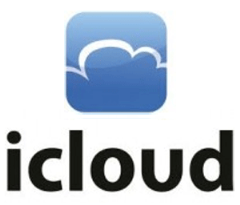 NEWS
NEWS
 NEWS
NEWS
 NEWS
NEWS
![]() For some time now, Apple has been seen as extremely deficient with their delivery of the personal cloud for customers. In fact, even services such as iTunes fall down when it comes to offering online storage—considering instead selling customers mp3s and movies that first must be downloaded directly to their computers and devices. Keeping in mind that most experiences with movies on iTunes lack even basic streaming (who wants to wait for a multi gigabyte movie that cost them $3.95 to download before they can watch it and they can only “rent” it for 12 hours anyway?)
For some time now, Apple has been seen as extremely deficient with their delivery of the personal cloud for customers. In fact, even services such as iTunes fall down when it comes to offering online storage—considering instead selling customers mp3s and movies that first must be downloaded directly to their computers and devices. Keeping in mind that most experiences with movies on iTunes lack even basic streaming (who wants to wait for a multi gigabyte movie that cost them $3.95 to download before they can watch it and they can only “rent” it for 12 hours anyway?)
All of this makes the confirmation of Apple’s upcoming iCloud service that much more profound for their future marketing strategy.
Jobs himself has referred to the living room as a “hobby market,” however, the living room is precisely where the personal cloud needs to coalesce. As part of human augmentation, it’s all about how we move our data with us. Being tied down to the office, to our bedroom, or computer room because we can barely get our memories off our PC and onto our mobile devices is tantamount to leaving behind entire segments of our lives. This is the power of cloud-storage and it’s why properties such as Amazon’s Cloud Drive locker and Google’s high mobility storage and personal suites are so powerful.
Apple already has what they need to not just place themselves in our living rooms but they produce a device that is tantamount to a window into a personal cloud: the iPad.
Mobile devices may be powerful, but they aren’t capable of possessing even a terabyte of storage without blundering into extreme expense or weight. In fact, many people who need large amounts of storage end up offloading it onto external hard drives (even those with powerful at-home PCs) but this is the sort of storage that you can’t take with you. An external hard drive
would be ridiculous and cumbersome for a tablet.
But not so for a cloud-storage service.
Apple’s progression towards the infrastructure necessary to start offering their customers cloud-based services started with the purchase of a bunch of real estate in North Carolina for a data center. If that wasn’t enough to set speculation wild, it was when they reached out to Isilon Systems and boxed up 12 petabytes of storage hardware. At the time, it was presumed that this might be the opening moves of a maneuver to get audio and video-streaming for iTunes—but it might be a yet bolder move than that that thrusts Apple out of their distant Olympian throne and into the clouds.
Over the past decade, Apple has been driving an all-in mobile and desktop computing solution between the Macintosh for high powered applications, the iPad for around-the-house work that you’d rather sit on the couch with, and the iPhone for purely mobile communication and thinking. What they’ve lacked so far happens to be something that bridges them all together when they’re not in the same place. Sure, all of these ![]() devices synchronize together; but as I said above, the iPad and the iPhone both could provide able and active windows into the personal cloud.
devices synchronize together; but as I said above, the iPad and the iPhone both could provide able and active windows into the personal cloud.
The personal cloud is in fact more a form of human memory and communication augmentation—it allows us to offload what we’re working on into a space not within the tablet itself. In fact, the personal cloud enables us to reach through the UI of the tablet and work with information sets a lot vaster than could be stored locally on the tablet, to sync up with our friends and workplaces, to collaborate and share, and keep it safe when we’re not there interacting with it.
Apple has everything they need to move some of their products into the cloud. iTunes would be an excellent start for them and could pull in other services as they go along. As a start, people already like to have access to their music everywhere they go—and the crux of this is that they want access to their music. With that much storage at their fingertips, Apple might then start offering content agnostic storage to permit sharing photographs, documents, and data between all of our various devices.
Support our mission to keep content open and free by engaging with theCUBE community. Join theCUBE’s Alumni Trust Network, where technology leaders connect, share intelligence and create opportunities.
Founded by tech visionaries John Furrier and Dave Vellante, SiliconANGLE Media has built a dynamic ecosystem of industry-leading digital media brands that reach 15+ million elite tech professionals. Our new proprietary theCUBE AI Video Cloud is breaking ground in audience interaction, leveraging theCUBEai.com neural network to help technology companies make data-driven decisions and stay at the forefront of industry conversations.